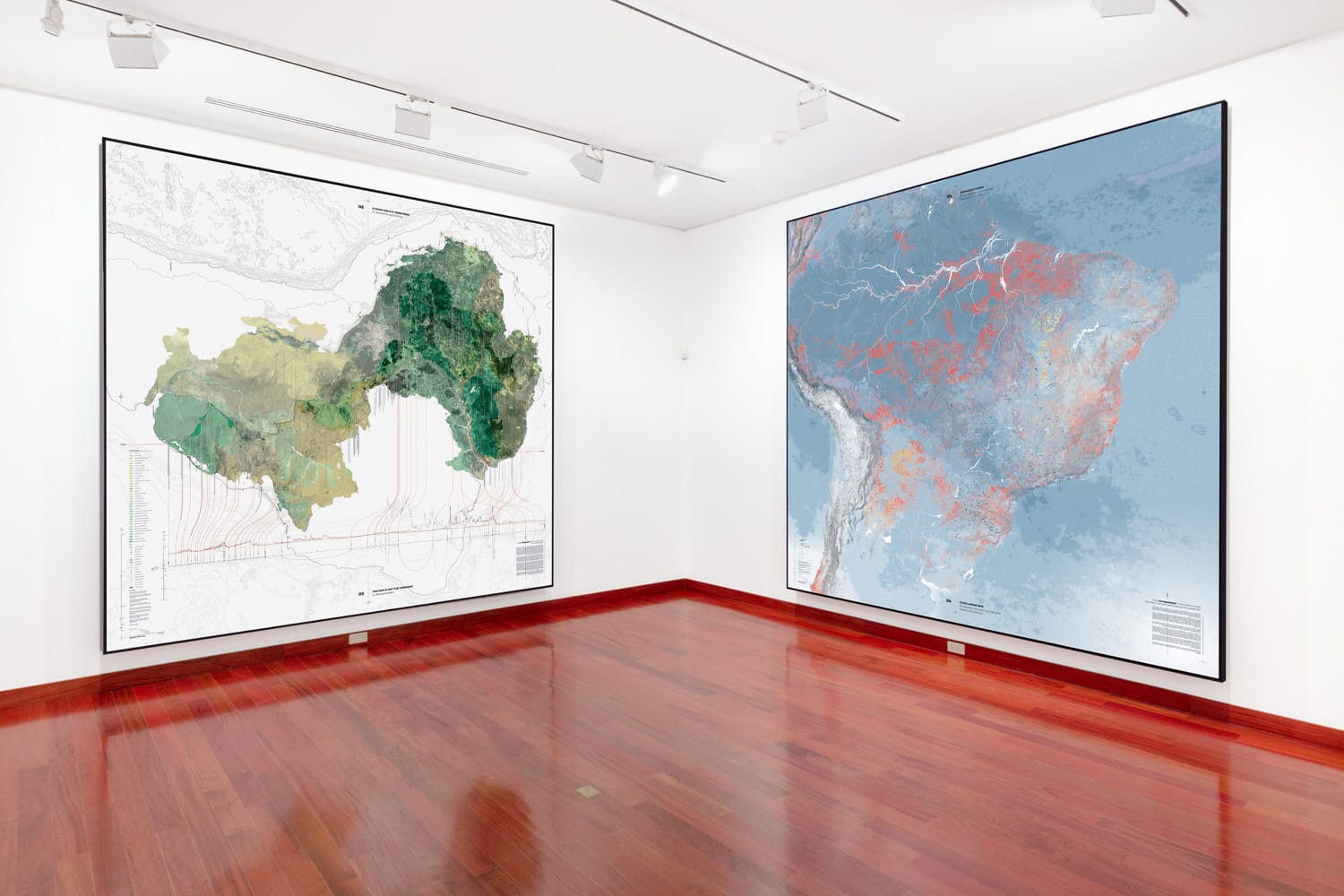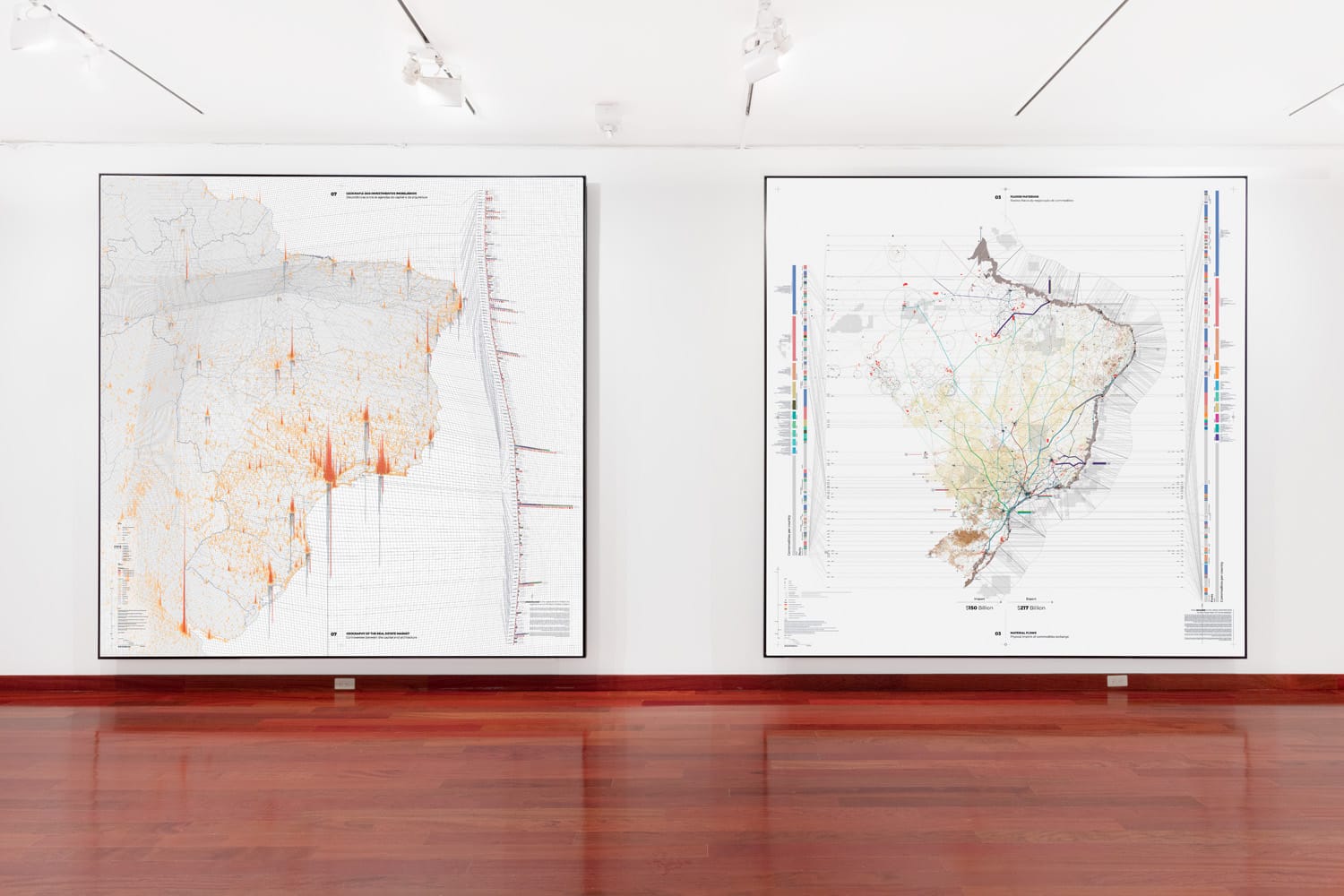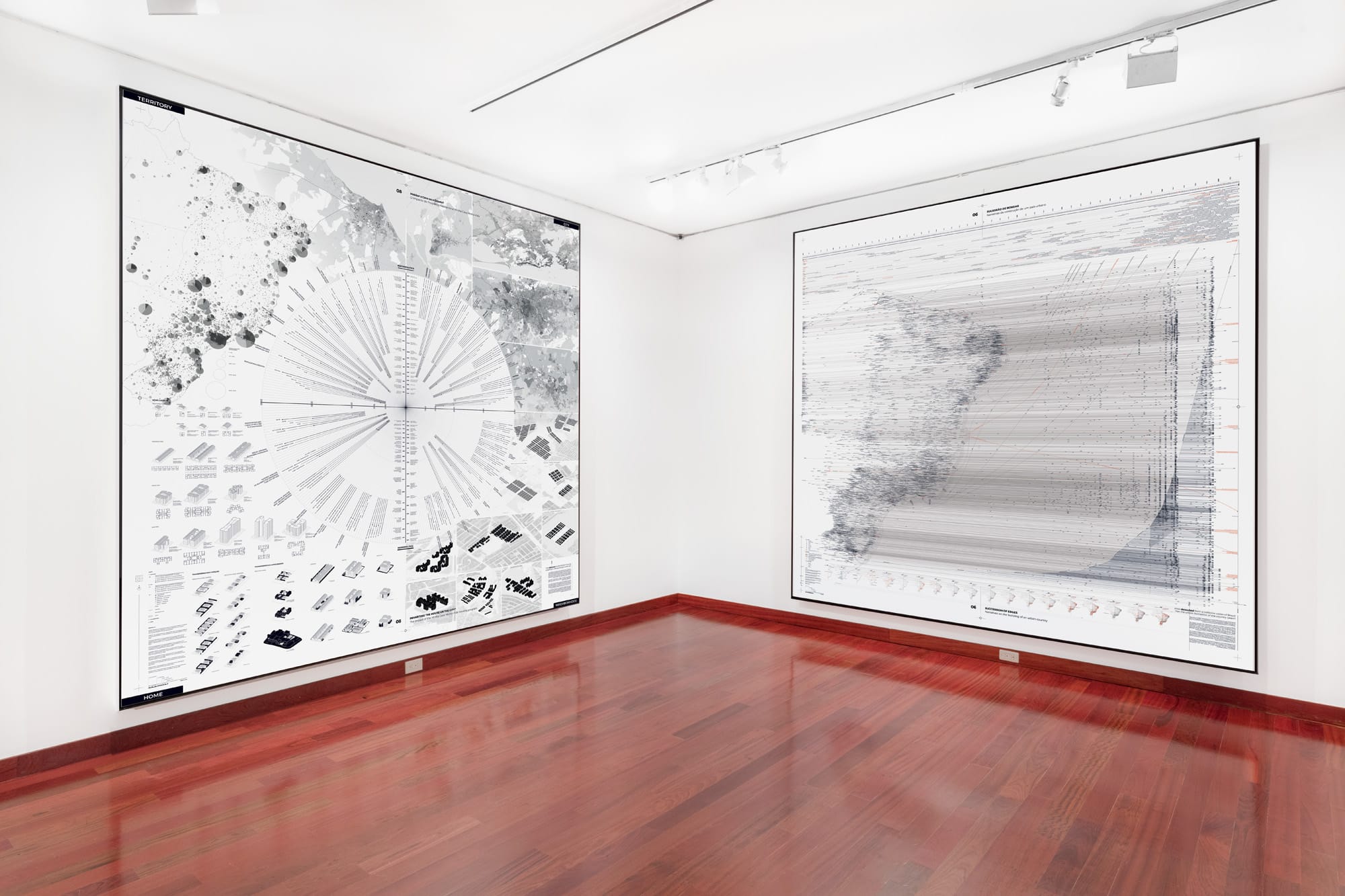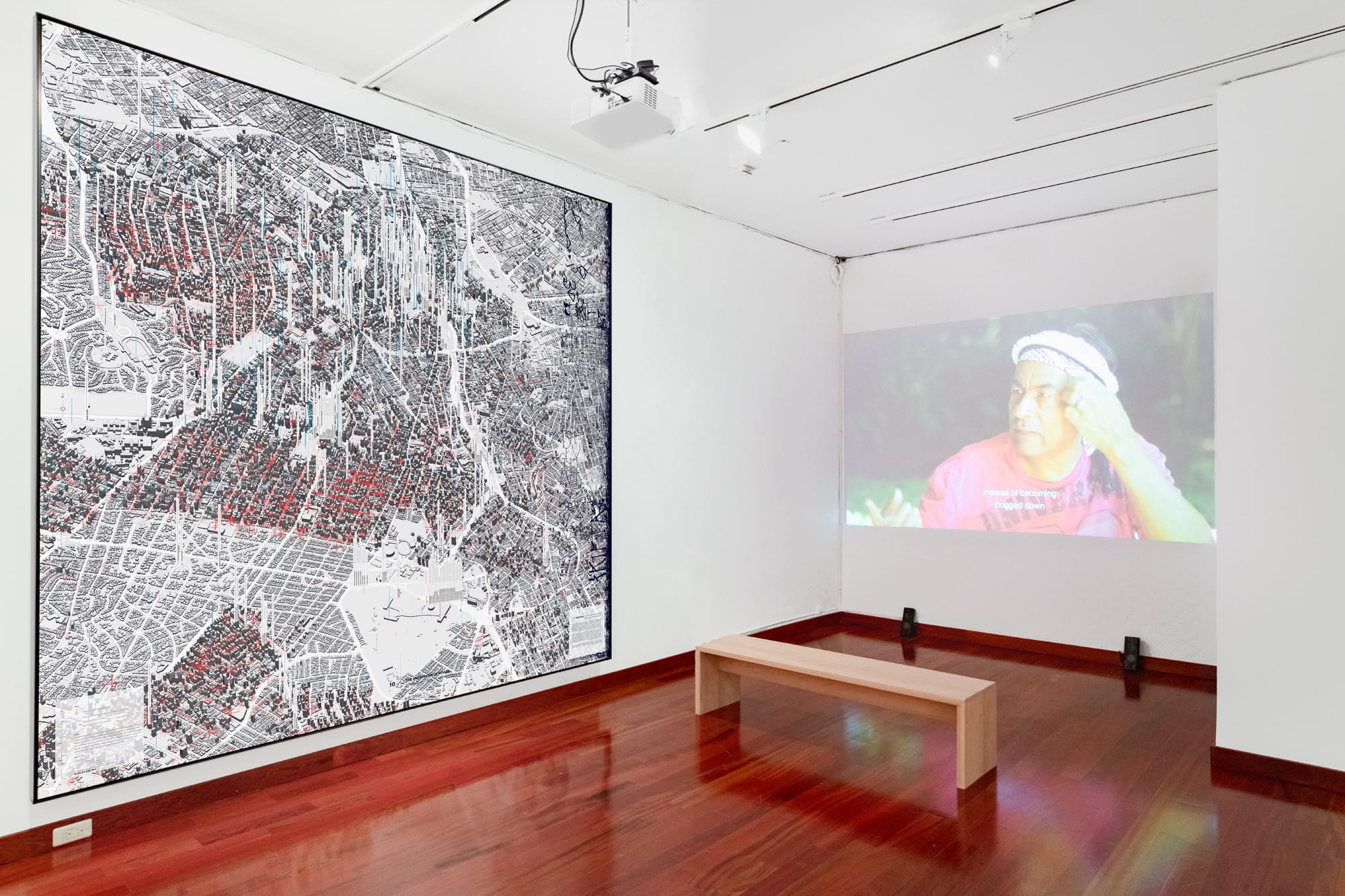Mapping Boundaries and Free Space in Brazil
A series of maps elucidates both literal and metaphorical walls that limit equality and freedom in Brazilian society and Latin America at large.

Political turmoil has embroiled Brazil for the last half-decade, exposing the country’s deep social divisions, which persisted over years of auspicious economic development. Walls of Air: The Brazilian Pavilion at the 16th Venice Architecture Biennale, currently on view at Americas Society, depicts the country’s contemporary cleavages through a series of maps. The exhibition was originally curated for the Brazilian Pavilion at the 2018 Venice Architecture Biennale. Its four curators, Sol Camacho, Laura González Fierro, Gabriel Kozlowski, and Marcelo Maia Rosa — all architects — chose to explore how the 2018 Biennale’s theme, “Freespace,” manifests in Brazil by representing the tension between “free space” in the country and other socioeconomic forces.
In a video about the exhibition, Kozlowski asks “What prevents Brazil from being free?” To answer this question, Walls of Air’s cartographies elucidate both literal and metaphorical walls that limit equality and freedom in Brazilian society and Latin America at large. The massive size of the maps magnifies their details, allowing onlookers to take in the depth of information on display.


The four curators conducted the research for their 10 large-scale maps with a multidisciplinary approach, bringing in over 200 collaborators across 10 different disciplines, including anthropology, politics, and medicine. Their research provided data on topics as disparate as migration, carbon emissions, and Brazil’s geographical border.
Many of the maps demonstrate a tug of war between public and private access in Brazil. For example, “Inhabiting the House or the City?” examines the impact of the “
Installation view of Walls of Air: The Brazilian Pavilion at the 16th Venice Architecture Biennale at Americas Society

<a href="https://riotimesonline.com/brazil-news/rio-politics/minha-casa-minha-vida-development>Minha Casa Minha Vida” (“My Home, My Life”) social housing program, while “Geography of the Real Estate Market” shows how capital has transformed Brazil’s cities and their architecture.
Other maps place Brazil in a global context. “This Map Is Not a Territory” deconstructs conventional maps of South America, bending Brazil’s border to reflect which points are permeable and which have hard geographic boundaries. “Crossbreedings,” “Material Flows,” and “Human Flows” work together to show how Brazil’s place in the global economy influences its social landscape. “The Encryption of Power” depicts how São Paulo street artists have used art to modify space in the city, spray-painting its wall with symbols known as “pixo.” Data from 12,853 Instagram posts mentioning words like “pixo,” newspaper articles, fines applied to offenders, and real estate values are all depicted on the map to show how private space is reclaimed in the city.





